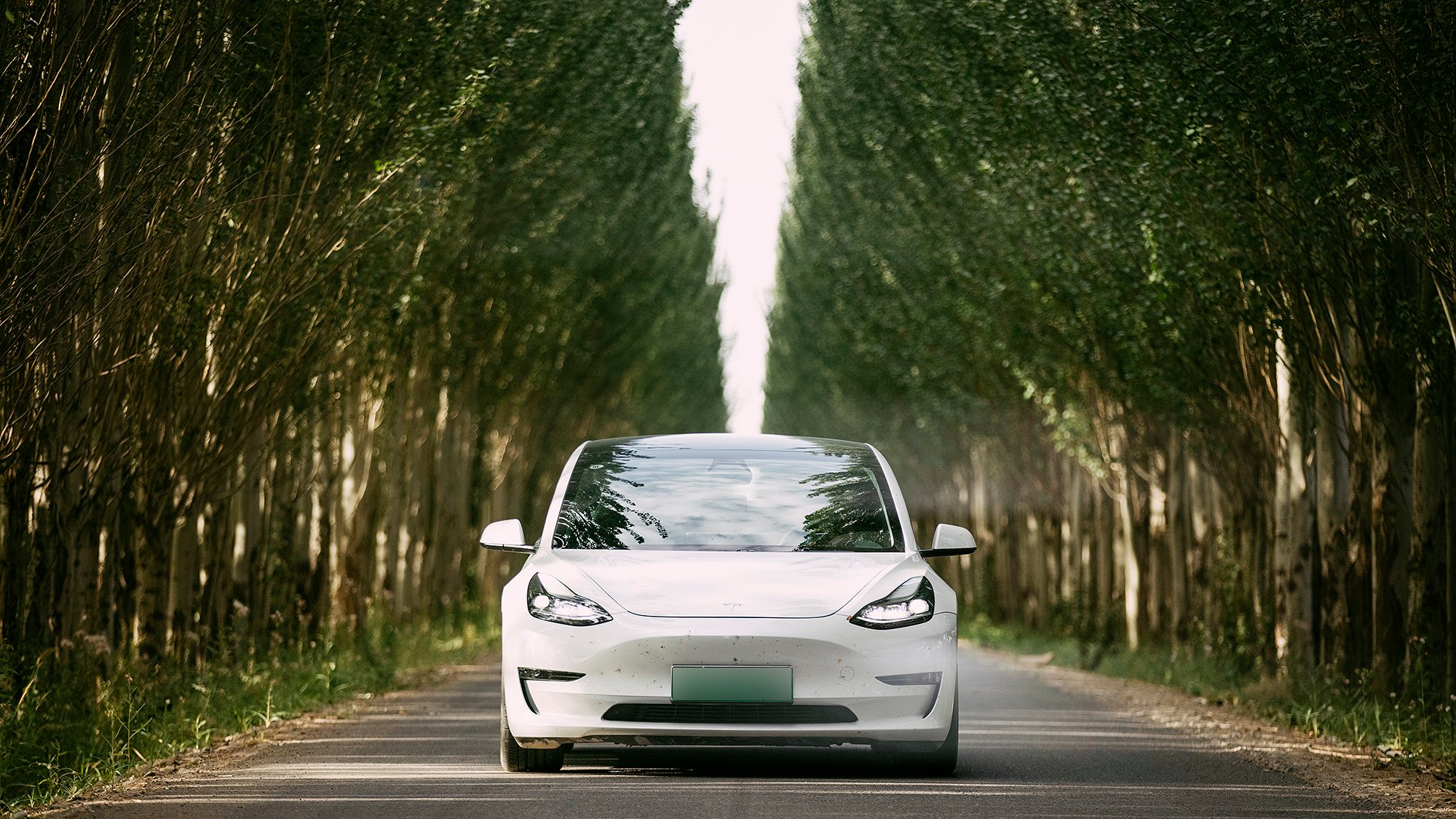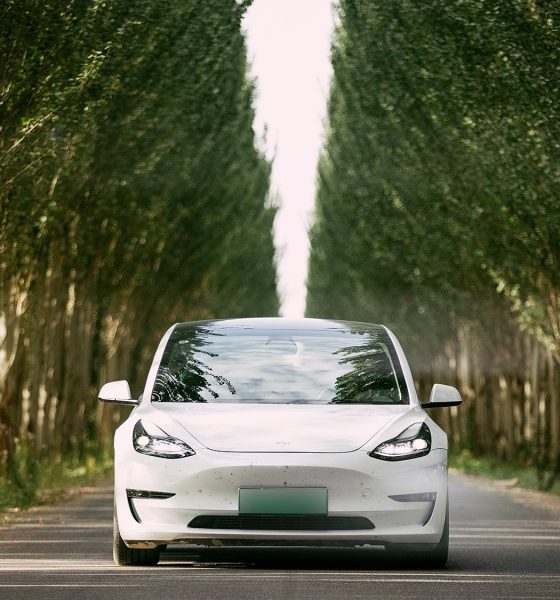

News
The Tesla Model 3 is driving the chip industry’s transition into the post-silicon age
The winds are changing in the global chip industry, and the Tesla Model 3 may very well be one of the catalysts for the impending shift. Tesla became one of the first automakers to use silicon carbide (SiC) chips in a mass-produced vehicle. And by incorporating SiC chips into the Model 3, the American automaker ended up giving the material some momentum in the EV supply chain
Tesla’s use of silicon carbide in the Model 3 was a bold move, considering that silicon has long been the material of choice in the semiconductor industry. Since replacing germanium crystals in the 1960s, silicon has effectively ushered in a golden age of semiconductors. But today, other materials such as silicon carbide have emerged to challenge silicon for its throne.
Silicon carbide contains silicon and carbon, and with chemical bonds that are stronger than those in plain silicon, it holds the title of the world’s third-hardest substance. As noted in a Nikkei Asia report, processing silicon carbide requires advanced technology, but its stability, among its other properties, allows chipmakers to cut energy loss by more than half compared to conventional silicon wafers. SiC chips are also good at dissipating heat, paving the way for smaller inverters.
Masayoshi Yamamoto, a professor at Nagoya University in Japan, noted that these advantages are well represented in the Tesla Model 3’s design. “The Model 3 has an air resistance factor as low as a sports car’s. Scaling down inverters enabled its streamlined design,” Yamamoto said.
The runaway success of the Tesla Model 3 effectively sent shockwaves in the chip industry. And these shockwaves have started to inspire a wave of commitments on silicon carbide chips. In June alone, German chipmaker Infineon Technologies unveiled an SiC module for EV inverters. Hyundai later announced that these Infineon-made SiC chips would be used in its next-generation electric cars. The South Korean automaker added that by using Infineon’s SiC chips, its EVs could see a 5% improvement in range compared to vehicles equipped with plain silicon chips.
Kazuhide Ino, chief strategy officer at Japanese chipmaker Rohm, noted that at this stage, makers of silicon carbide chips have reached a point where they are already competing with each other. “Thus far, chipmakers have worked together to build up the silicon carbide market, but we’ve reached the stage of competing with each other,” he said.
French market research firm Yole Developpement noted in a forecast that the market for silicon carbide chips would likely grow sixfold by 2026 compared to 2020. This should make the SiC chip segment into a $4.48 billion market. A lot of this would rely on whether production costs for SiC chips could be reduced adequately, however, as SiC chips are still more expensive than conventional silicon chips today. That being said, the gap between silicon and SiC chips has been narrowing. Five years ago, SiC chips were about 10X more expensive than traditional silicon. Today, they’re only twice as expensive.
*Quotes courtesy of Nikkei Asia.
Don’t hesitate to contact us with account tips. Just send a message to tips@teslarati.com to give us a heads up.

News
Tesla FSD fleet is nearing 7 billion total miles, including 2.5 billion city miles
As can be seen on Tesla’s official FSD webpage, vehicles equipped with the system have now navigated over 6.99 billion miles.

Tesla’s Full Self-Driving (Supervised) fleet is closing in on almost 7 billion total miles driven, as per data posted by the company on its official FSD webpage.
These figures hint at the massive scale of data fueling Tesla’s rapid FSD improvements, which have been quite notable as of late.
FSD mileage milestones
As can be seen on Tesla’s official FSD webpage, vehicles equipped with the system have now navigated over 6.99 billion miles. Tesla owner and avid FSD tester Whole Mars Catalog also shared a screenshot indicating that from the nearly 7 billion miles traveled by the FSD fleet, more than 2.5 billion miles were driven inside cities.
City miles are particularly valuable for complex urban scenarios like unprotected turns, pedestrian interactions, and traffic lights. This is also the difference-maker for FSD, as only complex solutions, such as Waymo’s self-driving taxis, operate similarly on inner-city streets. And even then, incidents such as the San Francisco blackouts have proven challenging for sensor-rich vehicles like Waymos.
Tesla’s data edge
Tesla has a number of advantages in the autonomous vehicle sector, one of which is the size of its fleet and the number of vehicles training FSD on real-world roads. Tesla’s nearly 7 billion FSD miles then allow the company to roll out updates that make its vehicles behave like they are being driven by experienced drivers, even if they are operating on their own.
So notable are Tesla’s improvements to FSD that NVIDIA Director of Robotics Jim Fan, after experiencing FSD v14, noted that the system is the first AI that passes what he described as a “Physical Turing Test.”
“Despite knowing exactly how robot learning works, I still find it magical watching the steering wheel turn by itself. First it feels surreal, next it becomes routine. Then, like the smartphone, taking it away actively hurts. This is how humanity gets rewired and glued to god-like technologies,” Fan wrote in a post on X.
News
Tesla starts showing how FSD will change lives in Europe
Local officials tested the system on narrow country roads and were impressed by FSD’s smooth, human-like driving, with some calling the service a game-changer for everyday life in areas that are far from urban centers.

Tesla has launched Europe’s first public shuttle service using Full Self-Driving (Supervised) in the rural Eifelkreis Bitburg-Prüm region of Germany, demonstrating how the technology can restore independence and mobility for people who struggle with limited transport options.
Local officials tested the system on narrow country roads and were impressed by FSD’s smooth, human-like driving, with some calling the service a game-changer for everyday life in areas that are far from urban centers.
Officials see real impact on rural residents
Arzfeld Mayor Johannes Kuhl and District Administrator Andreas Kruppert personally tested the Tesla shuttle service. This allowed them to see just how well FSD navigated winding lanes and rural roads confidently. Kruppert said, “Autonomous driving sounds like science fiction to many, but we simply see here that it works totally well in rural regions too.” Kuhl, for his part, also noted that FSD “feels like a very experienced driver.”
The pilot complements the area’s “Citizen Bus” program, which provides on-demand rides for elderly residents who can no longer drive themselves. Tesla Europe shared a video of a demonstration of the service, highlighting how FSD gives people their freedom back, even in places where public transport is not as prevalent.
What the Ministry for Economic Affairs and Transport says
Rhineland-Palatinate’s Minister Daniela Schmitt supported the project, praising the collaboration that made this “first of its kind in Europe” possible. As per the ministry, the rural rollout for the service shows FSD’s potential beyond major cities, and it delivers tangible benefits like grocery runs, doctor visits, and social connections for isolated residents.
“Reliable and flexible mobility is especially vital in rural areas. With the launch of a shuttle service using self-driving vehicles (FSD supervised) by Tesla in the Eifelkreis Bitburg-Prüm, an innovative pilot project is now getting underway that complements local community bus services. It is the first project of its kind in Europe.
“The result is a real gain for rural mobility: greater accessibility, more flexibility and tangible benefits for everyday life. A strong signal for innovation, cooperation and future-oriented mobility beyond urban centers,” the ministry wrote in a LinkedIn post.
News
Tesla China quietly posts Robotaxi-related job listing
Tesla China is currently seeking a Low Voltage Electrical Engineer to work on circuit board design for the company’s autonomous vehicles.

Tesla has posted a new job listing in Shanghai explicitly tied to its Robotaxi program, fueling speculation that the company is preparing to launch its dedicated autonomous ride-hailing service in China.
As noted in the listing, Tesla China is currently seeking a Low Voltage Electrical Engineer to work on circuit board design for the company’s autonomous vehicles.
Robotaxi-specific role
The listing, which was shared on social media platform X by industry watcher @tslaming, suggested that Tesla China is looking to fill the role urgently. The job listing itself specifically mentions that the person hired for the role will be working on the Low Voltage Hardware team, which would design the circuit boards that would serve as the nervous system of the Robotaxi.
Key tasks for the role, as indicated in the job listing, include collaboration with PCB layout, firmware, mechanical, program management, and validation teams, among other responsibilities. The role is based in Shanghai.
China Robotaxi launch
China represents a massive potential market for robotaxis, with its dense urban centers and supportive policies in select cities. Tesla has limited permission to roll out FSD in the country, though despite this, its vehicles have been hailed as among the best in the market when it comes to autonomous features. So far, at least, it appears that China supports Tesla’s FSD and Robotaxi rollout.
This was hinted at in November, when Tesla brought the Cybercab to the 8th China International Import Expo (CIIE) in Shanghai, marking the first time that the autonomous two-seater was brought to the Asia-Pacific region. The vehicle, despite not having a release date in China, received a significant amount of interest among the event’s attendees.








